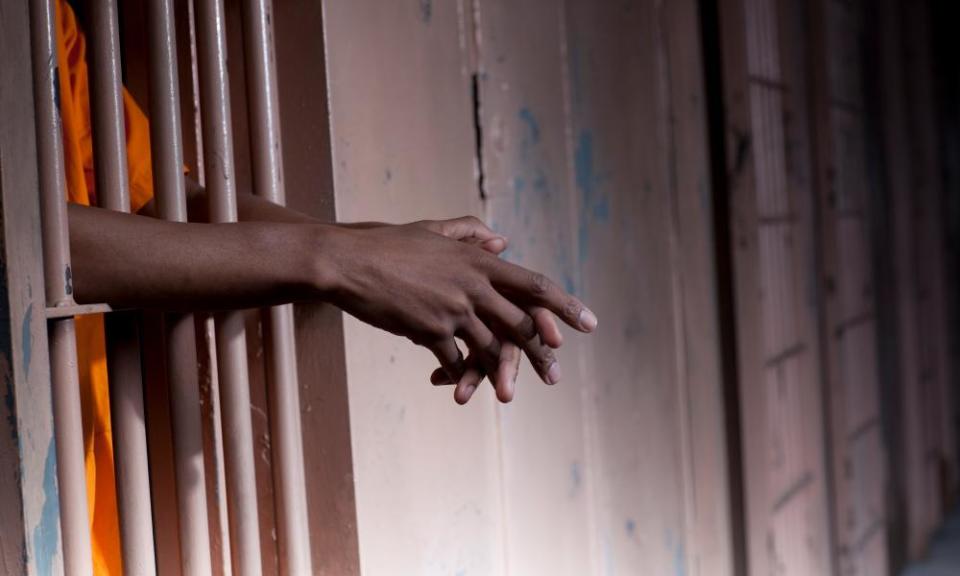The New Jim Crow by Michelle Alexander review – clear-eyed and distressing

In 2008, months before his election as president, Barack Obama assailed feckless black fathers who had reneged on responsibilities that ought not “to end at conception”. Where had all the black fathers gone, Obama wondered. In The New Jim Crow, Michelle Alexander has a simple answer to their whereabouts: they’ve gone to jail.
Her clear-eyed assessment, published in the UK almost a decade after it first stunned America, is an indictment of a society that, since the 1980s, has been complicit in the explosion of its prison population from around 300,000 to more than 2 million. Drug convictions have largely fuelled the increase, and an extraordinary number of those new felons have been black. This is not coincidental. The Reagan administration’s “war on drugs” shifted the legal goalposts, Alexander asserts, so that mass incarceration “emerged as a stunningly comprehensive and well-designed system of racialised social control that functions in a manner strikingly similar to Jim Crow”.
In the years following the civil war southern legislators designed “Jim Crow” laws to thwart the newly emancipated black population, notably curbing voting rights. Under the laws, black people also, increasingly, found themselves “relegated to convict leasing camps that were, in many ways, worse than slavery”. If Jim Crow was an effective means of controlling the black population, then modern mass incarceration, Alexander argues, is its successor.
The law is supposedly colour-blind but narratives around crimes are framed according to those deemed worthy of pity
The figures are extraordinary. A decade ago in Chicago, for instance, 55% of the adult black male population had a felony record. In quiet yet forceful writing Alexander, a legal scholar, outlines how the Reagan government exploited 1980s hysteria over crack cocaine to demonise the black population so that “black” and “crime” became interchangeable. It was a war – not on drugs – but on black people. While churchgoing mothers in the ghetto might want politicians to be tough on crime, they don’t want to see their sons routinely arrested (suspected of being drug dealers for wearing baggy trousers).
Alexander doesn’t understate the devastation caused by crack cocaine, quoting the historian David Kennedy’s observation that it “blew through America’s black neighbourhoods like the Four Horsemen of the Apocalypse”. But if the “war on drugs” was simply a question of controlling crime then college campuses, rather than black ghettos, would have been a safer bet. In 2000, the National Institute on Drug Abuse reported that white students used crack cocaine at eight times the rate of black students.
First-time drug offenders can face 10 years imprisonment; thousands of black Americans, following plea-bargaining, languish in jail for crimes they did not commit because of fears of these mandatory sentences. On release, they enter a parallel shadow society, where employment opportunities disappear, creating “a closed circuit of marginality”.
Black people haven’t fared better under the Democrats. President Clinton’s “three strikes and you’re out” legislation led to a further surge in prisoners given mandatory life sentences after conviction of a violent third felony.
The law is supposedly colour-blind but narratives around crimes are framed according to those deemed worthy or unworthy of compassion. Alexander draws stark comparisons with the prosecutions of drunk drivers. Cocaine is a scourge in US society but drunk driving (by white men 70% of the time) results in far more violent deaths, yet drunk drivers are often charged with misdemeanours.
The emergence of black leaders hasn’t improved matters but, rather, has perpetuated the fantasy of a post-racial society. How can a system be racist when there are black heads of police departments? Alexander argues that if we understood its dependency on black exceptionalism, then “the existence of black police chiefs would be no more encouraging today than the presence of black slave drivers…hundreds of years ago”.
Alexander wrote recently in the New York Times that she’s encouraged by “the astonishing changes that have been made in the last several years on a wide range of criminal justice issues”, including Florida restoring voting rights to more than 1.4 million people with felony convictions. But she is sceptical about the technological fix championed by enthusiasts of algorithms determining who should or shouldn’t be incarcerated.
Notwithstanding improvements to the US judicial system, this distressing book offers important lessons for all societies that claim colour-blindness but enact policies that scapegoat marginalised groups. Colour-blindness leads to denial, believes Alexander; better to strive for colour-consciousness.
This review is from the Observer
• The New Jim Crow: Mass Incarceration in the Age of Colourblindness by Michelle Alexander is published by Penguin (£9.99). To order a copy go to guardianbookshop.com or call 0330 333 6846. Free UK p&p over £15, online orders only. Phone orders min p&p of £1.99

